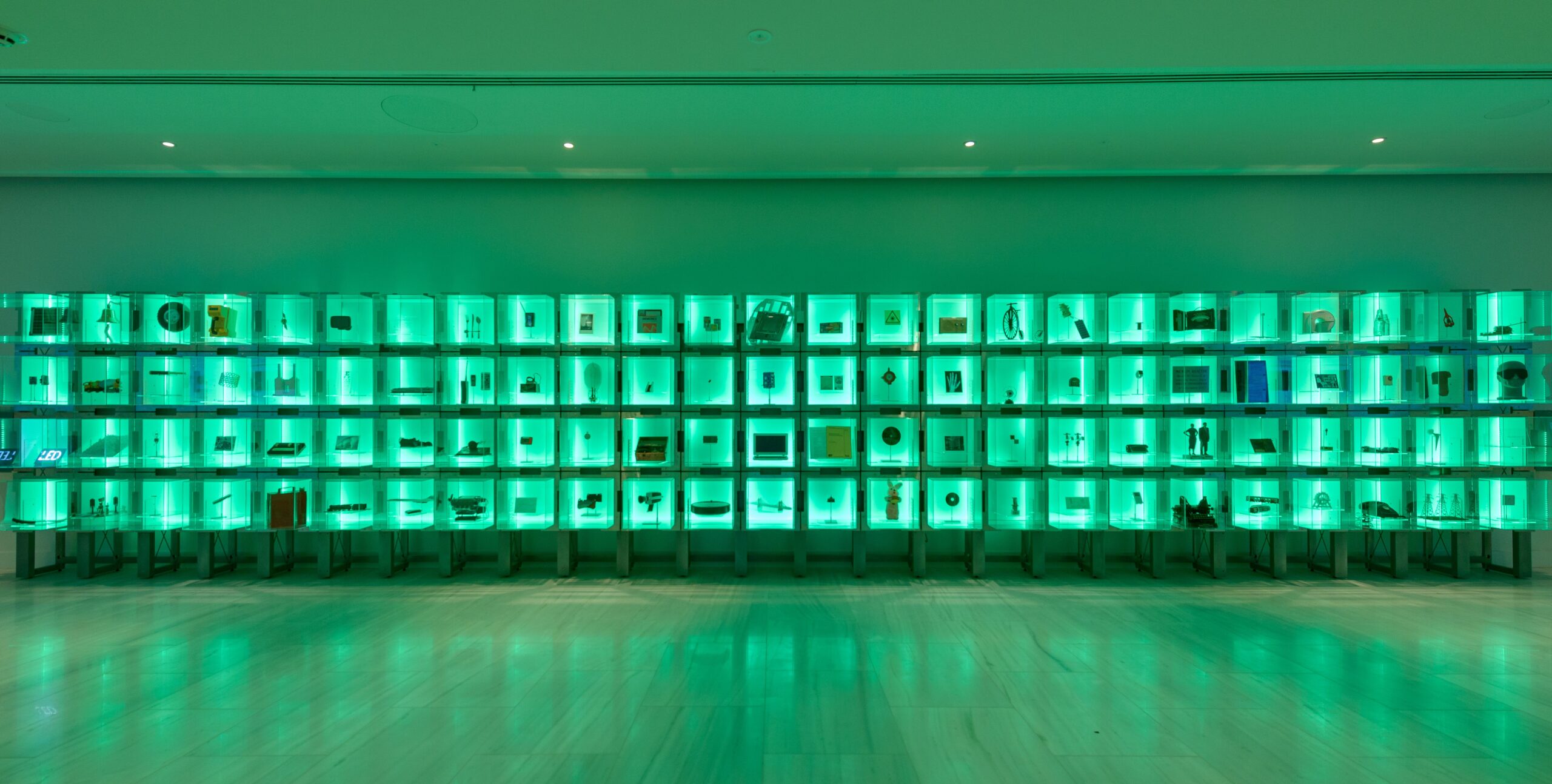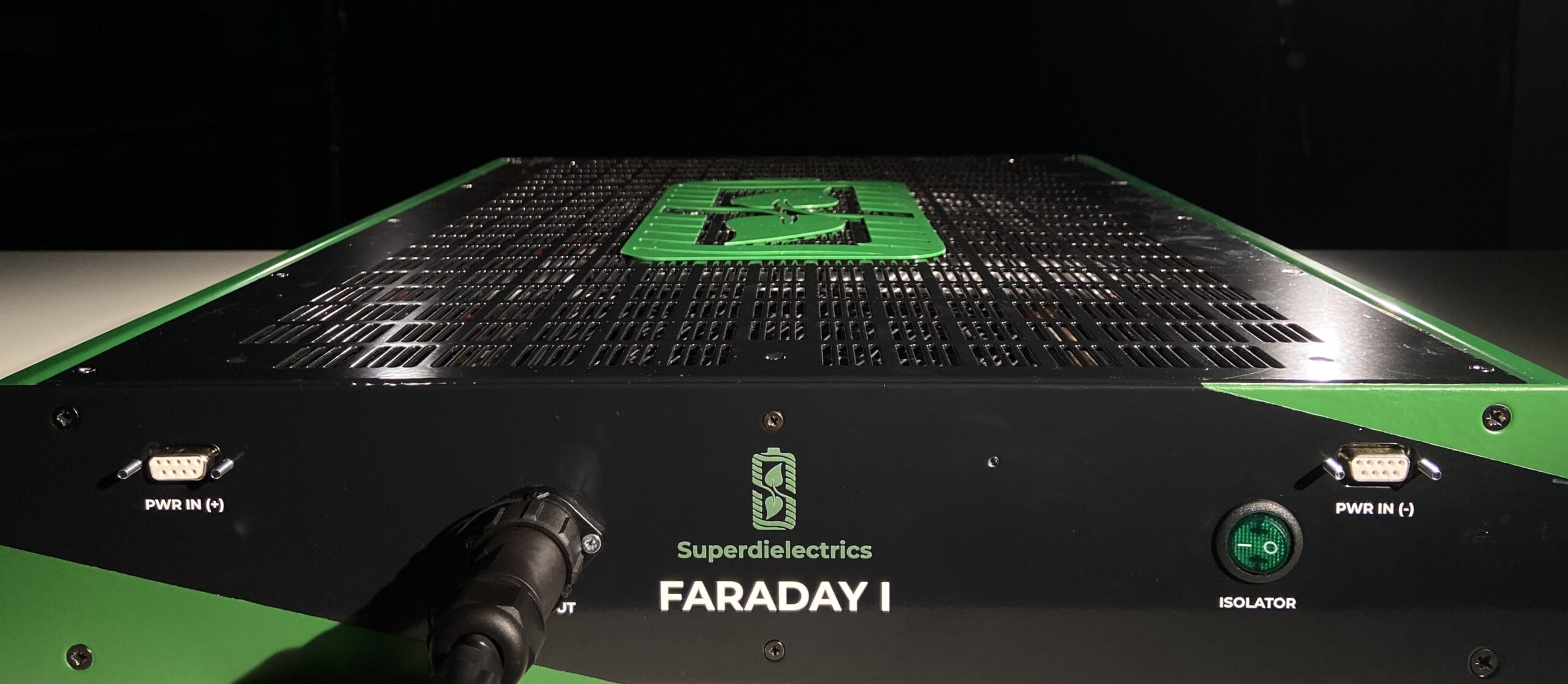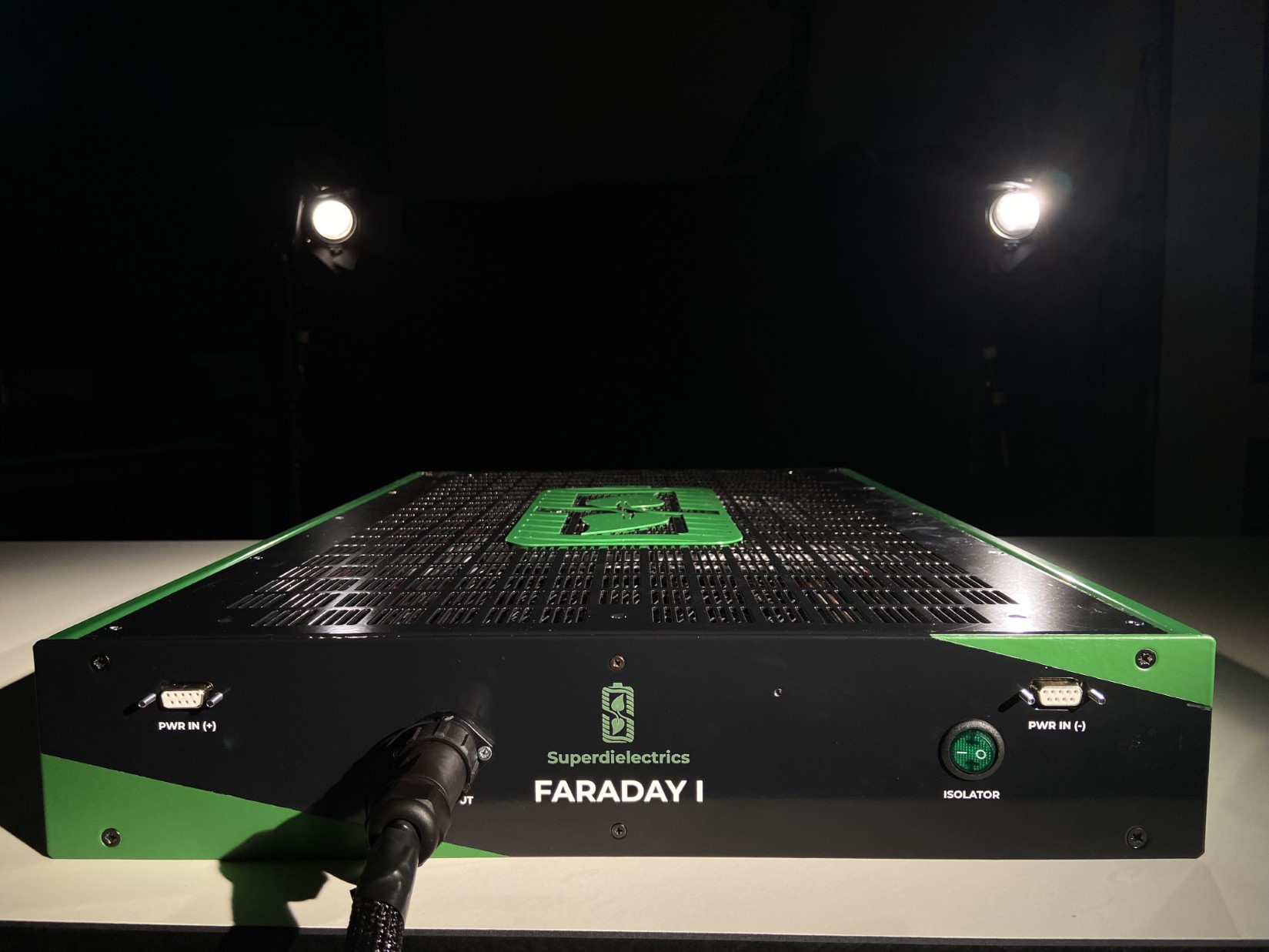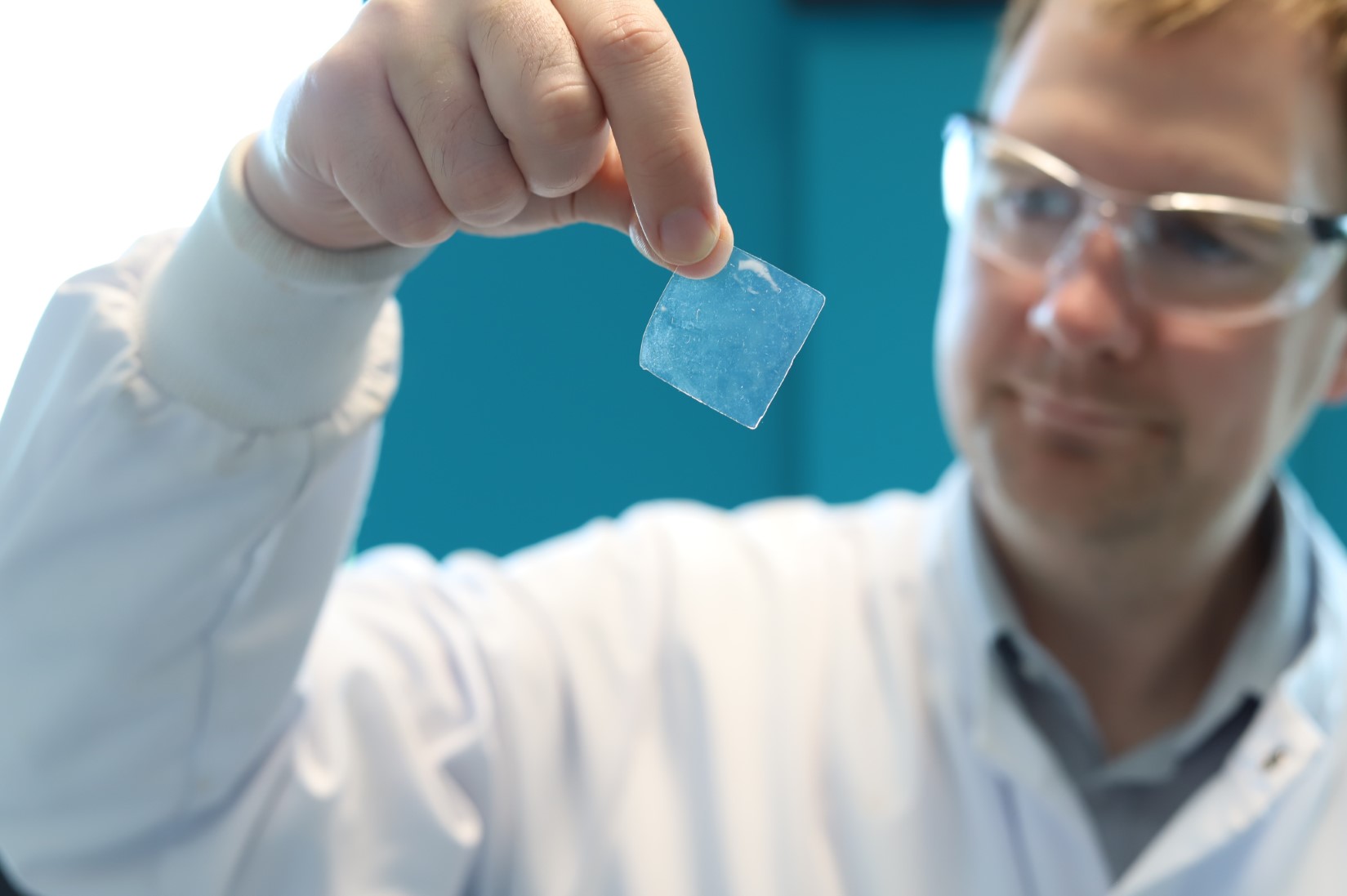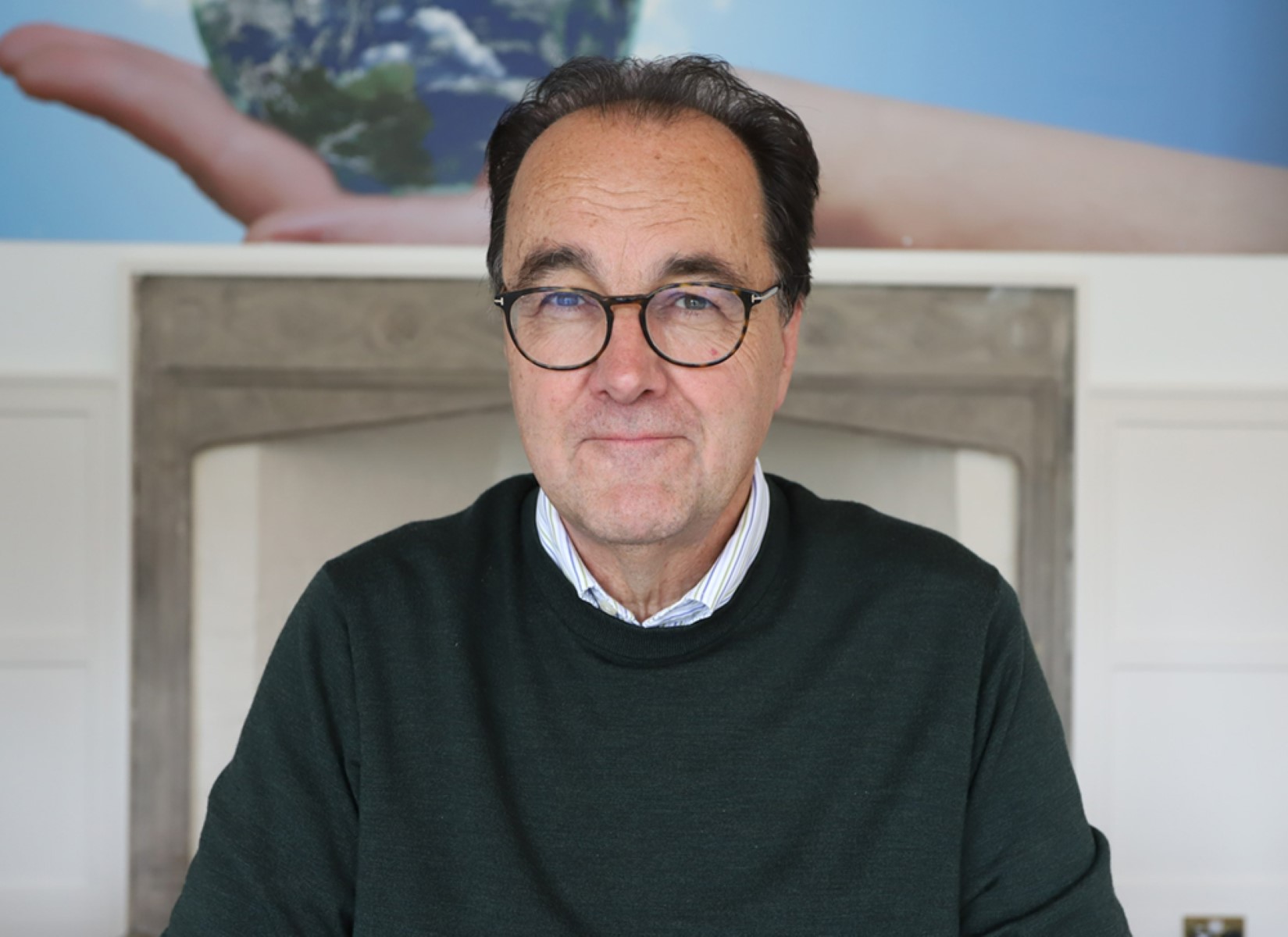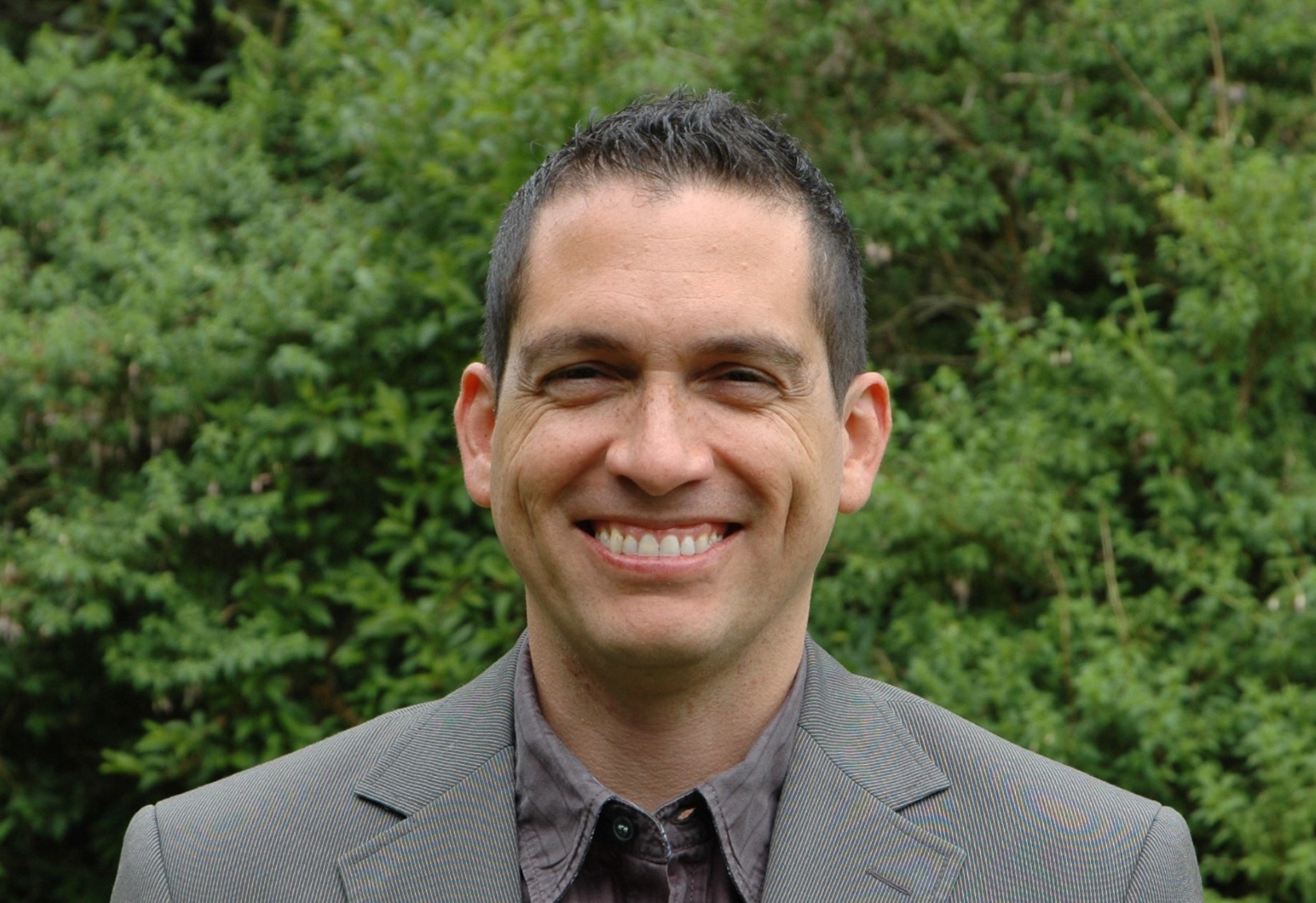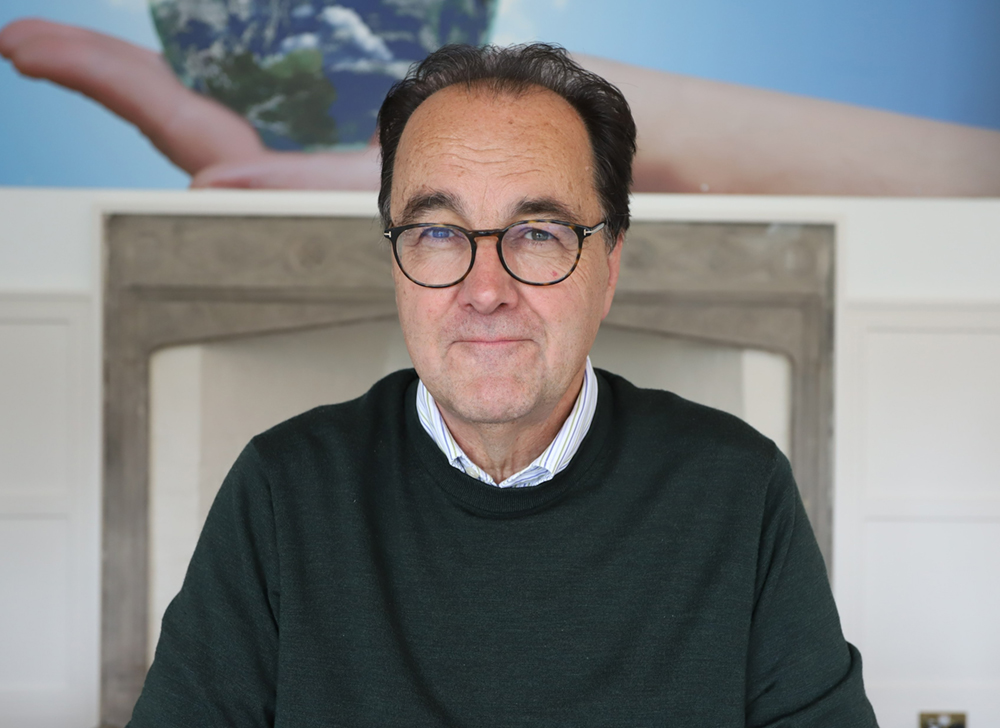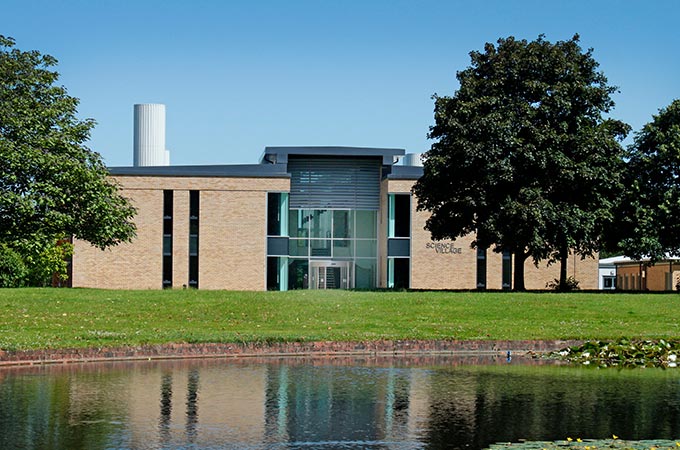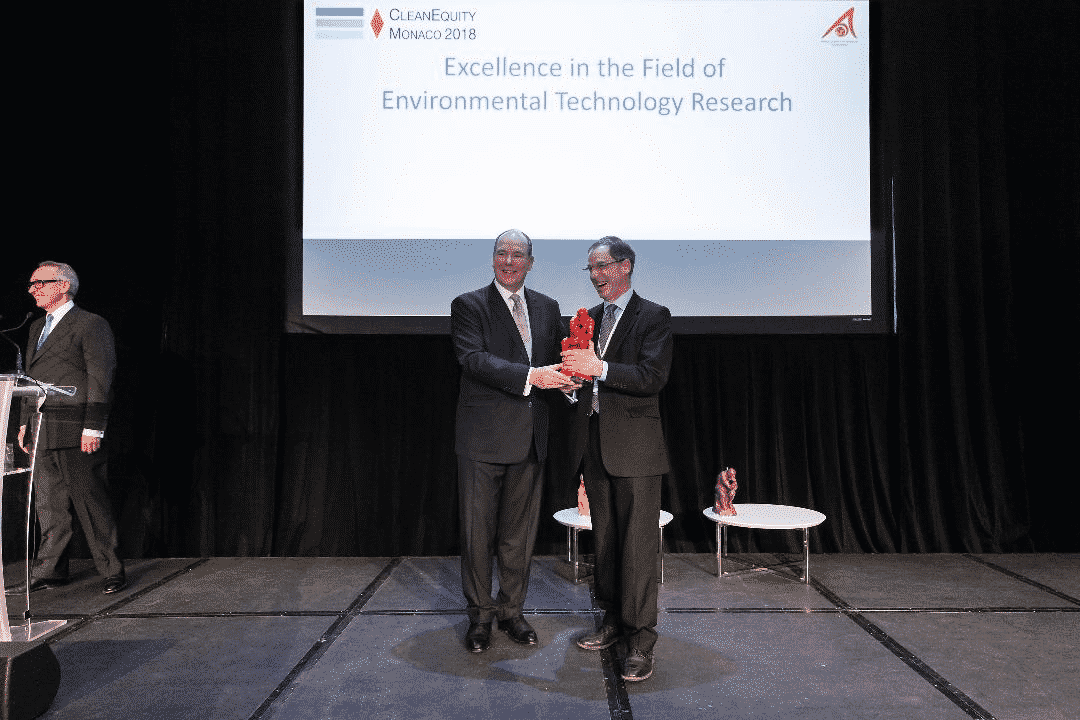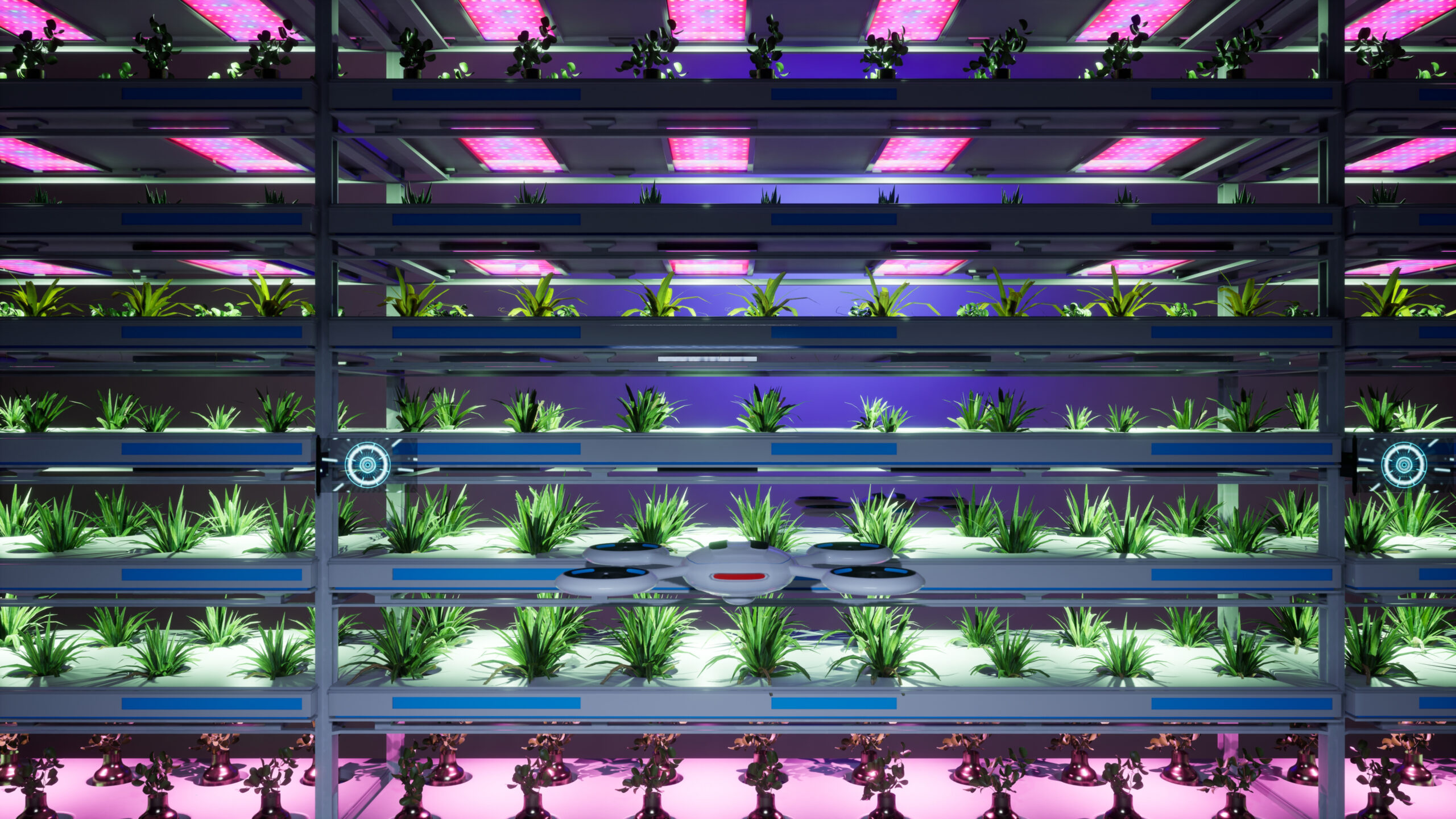Category: News
Cambridge, UK based Superdielectrics Group Plc has developed a breakthrough energy storage technology. The new technology stems from an ongoing collaboration with leading researchers at the University of Bristol who identified and validated the key mechanisms involved.
The Company’s vision is to create affordable, sustainable, energy systems. This could mean affordable grid independent energy anywhere in the world. Such systems require economically viable energy storage. The energy storage market is currently dominated by lithium-ion and lead-acid batteries. The Company’s patented new polymer-based energy storage technology solves the issue of dealing with rapidly fluctuating and intermittent renewable energy which makes it difficult to store solar and wind energy economically.
Superdielectrics’ energy storage technology combines electric fields (physics) and conventional chemical storage (chemistry) to create a new aqueous polymer-based energy storage technology. The Company is today formally launching the Faraday 1, its state-of-the-art hybrid energy storage technology. The technology behind the Faraday 1 has completed over 1 million hours of testing to create a system that already has the ability to significantly out perform lead-acid batteries and has the potential, with further development, to match or exceed existing Lithium-ion batteries.
The technology behind Faraday 1:
- Aqueous polymer-based technology that solves the issues of storing fluctuating and intermittent renewable energy.
- Highly efficient store of energy that charges over 10 times faster than lead-acid batteries with high cycle life.
- Safe store of energy – negligible fire risk.
- Low costs – uses readily available abundant raw materials.
- Recyclable.
- Huge scale of addressable opportunity with $50bn/year lead-acid battery market including electric scooter, forklift and off grid markets.

“The team at Superdielectrics has worked incredibly hard to develop a ground-breaking technology that has the potential to revolutionise the energy storage market. Our breakthroughs deliver the potential, at last, to create the sustainable, global decentralised energy systems that the world desperately requires.
The properties that our technology possess enables it to compete with and exceed current solutions in the energy storage arena across a number of key metrics whilst leading the way in sustainability, recyclability and affordability.
This is a remarkable achievement by all concerned and we now look forward to commercialising our platform and products – we have seen global interest in our technology.”

“The combination of the benefits of rapid charging and sustainability used for energy storage now make it possible to create worldwide affordable and clean energy systems.
In the future, the continuing development of our pure supercapacitor technology could surpass all existing battery technologies.”

“It is a privilege to be part of the most exciting technology in the energy sector that I have seen involving our organisation. These state-of-the-art supercapacitors have the potential to become a game-changer in energy storage. Superdielectrics’ devices are not only highly competitive against mature technologies in terms of energy and power density, but they are also free of critical elements, using earth-abundant materials with a lower environmental impact than other energy storage technologies. I can see Superdielectrics developing into a major player in this global market, providing safe and affordable sustainable energy for everyone.”

“Superdielectrics’ technology offers a new route to developing a clean energy system.”
Enquiries: please contact us via our contact page or directly on +44 (0) 1223 679 460.
Share:
Professor Newborough brings with him a wealth of knowledge and contacts in the field of energy storage, as well as 14 years’ experience at ITM Power PLC, where he worked most recently as Development Director. Professor Newborough has 35 years’ post-doctoral experience in energy systems and hydrogen technology. He has published over 100 scientific papers and has over 4,500 citations. During his career he held the Scottish Power / Royal Academy of Engineering Research Chair in Energy and Environmental Engineering, Heriot Watt University, and previously, he was Professor of Energy Systems at Cranfield University and is currently a Visiting Professor at the University of Bath.
Commenting on the appointment, Superdielectrics CEO, Jim Heathcote said, “We are delighted that Professor Newborough will be joining us as Director of Research and Development as an outstanding successor to Dr Highgate. Marcus’ experience will be vital as we continue to develop our technology.”
Professor Newborough said, “I am looking forward to the opportunity to lead a strong R&D team in work that is potentially globally significant.”
Share:
The sustainable electrical energy storage specialist secures Suite 2 in the Science Village
Cambridge, UK, 15 February 2021: Chesterford Research Park is delighted to welcome material research company Superdielectrics to the Park’s prestigious Science Village.
Superdielectrics is developing high energy density, low cost, low environmental impact electrical energy storage devices that will help create a clean and sustainable global energy and transportation system. Supercapacitors store energy using electrodes and electrolytes and both charge and deliver energy quickly, unlike conventional batteries which perform the same task in a much slower way with the added hazard of end-of-life waste. Superdielectrics’ supercapacitors are safe, fast, contain no rare materials or conflict metals and have the added benefit of reducing pollution and waste.
Superdielectrics join fellow Science Village occupiers including Diagnostics for the Real World, Camena Bioscience and Oxford Nanopore in this energy-efficient, high-quality building, so stimulating company is guaranteed.
Jim Heathcote, CEO, Superdielectrics said: “Superdielectrics Ltd is delighted to have taken research and development laboratories at Chesterford Research Park. We are developing a completely clean and sustainable energy system using our unique high energy density supercapacitor materials.
“We are driven by strong environmental and social values which are shared by Chesterford Research Park. These are exciting times as we strive to tackle fundamental scientific problems that could reduce global poverty and starvation while cleaning up the environment.”
Chesterford Research Park provides an innovative and future-proofed environment for both established and early-stage biotechnology and pharmaceutical research and development companies. In addition to Superdielectrics, the Park is home to technology and life science innovators including Arecor, AstraZeneca, Lonza, Charles River Laboratories, Cambridge Epigenetix, Domainex and Oncologica.
Julian Cobourne, Senior Asset Manager, Aviva Investors, joint owners of Chesterford Research Park with Uttlesford District Council added: “I am thrilled that the innovative team at Superdielectrics will be continuing their ground-breaking work at Chesterford Research Park. With its focus on sustainability and the environment, Superdielectrics’ aims are complementary to that of the Park.
“Integral to the Cambridge biotech cluster, Chesterford Research Park continues to attract leading bioscience ventures. The fitted nature of the Science Village remains extremely popular with companies seeking ‘plug and play’ facilities, which negates the requirement for a protracted and sometimes expensive fit-out process. Superdielectrics are in good company in this truly unique setting with stunning natural parkland surroundings.”
Share:
Hosted by Innovator Capital – 15th March 2018
CleanEquity® Monaco 2018, the forum for emerging sustainable technology companies, hosted by Innovator Capital and the Monaco Economic Board, closed on Friday, 9th March with the Awards Ceremony in the presence of H.S.H. Prince Albert II of Monaco.
An independent panel of judges, chaired by His Serene Highness, selected Superdielectrics as the winner of the award for Excellence in the Field of Environmental Technology Research.
Mungo Park, Chairman of Innovator Capital commented: “Science fiction becomes science fact once again. Congratulations to Superdielectrics for pushing the envelope on supercapacitor performance.”
About Superdielectrics Ltd
Superdielectrics is a material research company that has discovered, filed patents and is commercialising a highly significant scientific breakthrough in supercapacitor electrolyte materials and electrical energy storage. The University of Bristol estimates that these newly discovered materials have dielectric property values which are 1,000-10,000 times greater than conventional electrolyte solutions. This breakthrough offers the prospect of a new energy storage technology that is superior to existing battery technology.
Jim Heathcote, CEO of Superdielectrics said: “It is a great honour to receive this award on behalf of Superdielectrics and the scientific teams from Surrey and Bristol Universities whose diligent work has achieved such an important breakthrough. I believe that the CleanEquity Monaco awards are the equivalent to the Oscars for the environmental and scientific community. They have an important role in encouraging and supporting small companies with big dreams.
I would also like to pay tribute to the vision of His Serene Highness Prince Albert II of Monaco and Mungo Park for creating this important annual event more than 10 years ago. They identified that further scientific advances are necessary to achieve a clean and sustainable future for mankind and have created a forum for the most creative young companies to showcase their technology to the world.”
CleanEquity thanks, in particular: Prince Albert II of Monaco’s Foundation, Cohesion Investments, Covington & Burling, Cision, Cranfield University, easyGroup, Hobbs & Towne, the Monaco Economic Board, Parkview, Shell Foundation and STRATIS Impact.
CleanEquity Monaco will be returning to the Principality of Monaco in March 2019.
Share:
Lithium-ion batteries could be under threat after the development of polymer materials by the Universities of Surrey and Bristol, along with Superdielectrics Ltd, that could challenge the dominance of these traditional batteries.
Only one year ago, the partners announced scientific results for novel polymer materials that have dielectric properties 1,000 to 10,000 times greater than existing electrolytes (electrical conductors). These stunning scientific findings have now been converted into ‘device’ scale technical demonstrations.
Researchers from the universities achieved practical capacitance values of up to 4F/cm2 on smooth low-cost metal foil electrodes. Existing supercapacitors on the market typically reach 0.3F/cm2 depending upon complex extended surface electrodes.
More significantly, the researchers managed to achieve results of 11-20F/cm2 when the polymers were used with specially treated stainless-steel electrodes – the details of which are being kept private pending a patent application.
Supercapacitors store energy using electrodes and electrolytes and both charge and deliver energy quickly – conventional batteries perform the same task in a much slower, more sustained way. Supercapacitors have the ability to charge and discharge rapidly over very large numbers of cycles. However, because existing supercapacitors have poor energy density per kilogramme (currently around one twentieth of existing battery technology), they have been unable to compete with conventional battery energy storage. Even with this restriction, supercapacitor buses are already being used in China, but the current technology means that they need to stop to be recharged frequently (i.e. at almost every bus-stop).
The team of scientists have been able to test the new materials in two ways:
By using small single layer cells charged to 1.5 volts for two to five minutes and then run demonstration devices, including a small fan. By using a three-cell series stack that is able to be rapidly charged to five volts and operate an LED.
The University of Bristol is going much further by producing a complex series-parallel cell structure in which both the total capacitance and operating voltage can be separately controlled.
Based on these impressive results, Superdielectrics Ltd, the company behind this technology, is now looking to build a research and low volume production centre. If successful in production, the material could not only be used as a battery for future mobile devices, but could also be used in refuelling stations for electric cars.
Dr Brendan Howlin, Senior Lecturer in Computational Chemistry at the University of Surrey, said: “These results are extremely exciting and it is hard to believe that we have come so far in such a short time. We could be at the start of a new chapter in the technology of low cost electrical energy storage that could shape the future of industry and society for many years to come.”
Dr Donald Highgate, Director of Research for Superdielectrics Ltd and alumnus of the University of Surrey, said: “These exciting results are of particular satisfaction to me because they build upon my work in hydrophilic polymers that has been a major part of my professional life; beginning in the later 1970s with extended wear soft contact lenses, and leading in the period 1990 to 2009, to fuel cells and electrolysers of exceptional efficiency.
“The present work, if it can be translated into production, promises to make rapid charging possible for electric vehicles, as well as offering a much-needed low cost method of storing the transient output from renewable energy systems. Wind, wave and solar energy is available but it is intermittent and, without storage, cannot be relied upon to meet our energy needs. This new work would transform the energy system which underpins our entire way of life – it is the necessary development before we and our children can have a genuinely sustainable, environmentally safe energy supply.”
Dr Ian Hamerton, Reader in Polymers and Composite Materials from the Department of Aerospace Engineering at the University of Bristol, commented: “Following the unveiling of the preliminary results at the first press conference just 14 months ago, the team has worked hard to increase the storage capability of these innovative materials still further. Our foremost challenge is now to translate these scientific findings into robust engineered devices and unlock their revolutionary potential.”
Share:
- Major scientific breakthrough research has discovered new materials offering an alternative to battery power proven to be between 1,000-10,000 times more powerful than the existing battery alternative – a supercapacitor.
- The new technology is believed to have the potential for electric cars to travel to similar distances as petrol cars without the need to stop for lengthy re-charging breaks of between 6-8 hours, and instead re-charge fully in the time it takes to fill a regular car with petrol.
- The scientific findings made by Augmented Optics Ltd and its wholly owned subsidiary Supercapacitor Materials Ltd with the University of Surrey and University of Bristol have produced a safer, faster charging, more efficient and greener alternative to battery power and supercapacitor abilities as we currently know them.
Ground-breaking research from the University of Surrey and Augmented Optics Ltd., in collaboration with the University of Bristol, has developed potentially transformational technology which could revolutionise the capabilities of appliances that have previously relied on battery power to work.
This development by Augmented Optics Ltd., could translate into very high energy density super-capacitors making it possible to recharge your mobile phone, laptop or other mobile devices in just a few seconds.
The technology could have a seismic impact across a number of industries, including transport, aerospace, energy generation, and household applications such as mobile phones, flat screen electronic devices, and biosensors. It could also revolutionise electric cars, allowing the possibility for them to recharge as quickly as it takes for a regular non-electric car to refuel with petrol – a process that currently takes approximately 6-8 hours to recharge. Imagine, instead of an electric car being limited to a drive from London to Brighton, the new technology could allow the electric car to travel from London to Edinburgh without the need to recharge, but when it did recharge for this operation to take just a few minutes to perform.
Supercapacitor buses are already being used in China, but they have a very limited range whereas this technology could allow them to travel a lot further between recharges. Instead of recharging every 2-3 stops this technology could mean they only need to recharge every 20-30 stops and that will only take a few seconds.
Elon Musk, of Tesla and SpaceX, has previously stated his belief that supercapacitors are likely to be the technology for future electric air transportation. We believe that the present scientific advance could make that vision a reality.
The technology was adapted from the principles used to make soft contact lenses, which Dr Donald Highgate (of Augmented Optics, and an alumnus of the University of Surrey) developed following his postgraduate studies at Surrey 40 years ago. Supercapacitors, an alternative power source to batteries, store energy using electrodes and electrolytes and both charge and deliver energy quickly, unlike conventional batteries which do so in a much slower, more sustained way. Supercapacitors have the ability to charge and discharge rapidly over very large numbers of cycles. However, because of their poor energy density per kilogramme (approximately just one twentieth of existing battery technology), they have, until now, been unable to compete with conventional battery energy storage in many applications.
Dr Brendan Howlin of the University of Surrey, explained: “There is a global search for new energy storage technology and this new ultra capacity supercapacitor has the potential to open the door to unimaginably exciting developments.”
The ground-breaking research programme was conducted by researchers at the University of Surrey’s Department of Chemistry where the project was initiated by Dr Donald Highgate of Augmented Optics Ltd. The research team was co-led by the Principal Investigators Dr Ian Hamerton and Dr Brendan Howlin. Dr Hamerton continues to collaborate on the project in his new post at the University of Bristol, where the electrochemical testing to trial the research findings was carried out by fellow University of Bristol academic – David Fermin, Professor of Electrochemistry in the School of Chemistry.
Dr Ian Hamerton, Reader in Polymers and Composite Materials from the Department of Aerospace Engineering, University of Bristol said: “While this research has potentially opened the route to very high density supercapacitors, these *polymers have many other possible uses in which tough, flexible conducting materials are desirable, including bioelectronics, sensors, wearable electronics, and advanced optics. We believe that this is an extremely exciting and potentially game changing development.”
*the materials are based on large organic molecules composed of many repeated sub-units and bonded together to form a 3-dimensional network.
Jim Heathcote, Chief Executive of both Augmented Optics Ltd and Supercapacitor Materials Ltd, said: “It is a privilege to work with the teams from the University of Surrey and the University of Bristol. The test results from the new polymers suggest that extremely high energy density supercapacitors could be constructed in the very near future. We are now actively seeking commercial partners in order to supply our polymers and offer assistance to build these ultra high energy density storage devices.”
NOTES FOR EDITOR: For interview requests with the University of Surrey or Augmented Optics Ltd/Supercapacitor Materials Ltd please contact Ashley Lovell on 01483 686141 or email a.lovell@surrey.ac.uk
For interview requests with the University of Bristol please contact Joanne Fryer on 0117 331 7276, mobile 07747 768804 or email joanne.fryer@bristol.ac.uk
About Augmented Optics Ltd/Supercapacitor Materials Ltd
Augmented Optics Ltd was incorporated 3 years ago to research and develop new electronically conducting polymers. The Company has commissioned research at the University of Surrey and an evaluation programme at Bristol University that has generated important new materials with potentially valuable commercial properties. It was founded by Dr Donald Highgate, Jim Heathcote and Nigel Spence. Dr Highgate and Jim Heathcote have worked together on advanced polymers and energy technology for 15 years. The company has been funded by a number of investors expert in the support and exploitation of new technologies. In light of the recent discovery of ‘high capacitance’ polymers that may be ready for immediate commercialisation a wholly owned subsidiary Supercapacitor Materials Ltd was registered and has the website www.Supercapacitormaterials.com.
About the University of Surrey
The University of Surrey is one of the UK’s top higher education institutions and was recognised as the University of the Year in The Times and Sunday Times Good University Guide 2016. With 125 years of academic heritage since our founding in Battersea, and 50 years of world-class teaching and research in Guildford, the University of Surrey is the intellectual home for more than 15,200 students, 100,000 alumni and 2,800 staff.
Freedom of thought, pursuit of academic excellence, and the advancement and application of knowledge underpin the wonderful things happening here. Our mission is to transform lives and enrich society through outstanding teaching and learning, pioneering research and impactful innovation.
The University of Surrey has been recognised by three Queen’s Anniversary Prizes for Further and Higher Education and is a destination of choice for higher learning in subjects ranging from Engineering to the Arts. As a global university, we are proud of our strong partnerships with internationally leading institutions and businesses, while being firmly engaged with our local community in Guildford and Surrey. We are committed to educating the next generation of professionals and leaders, and to providing thought leadership and innovation to address global challenges and contribute to a better tomorrow for the world.
About the University of Bristol
The University of Bristol is one of the most popular and successful universities in the UK. It was ranked within the top 50 universities in the world in the QS World University Rankings 2016. The University of Bristol is ranked among the top five institutions in the UK for its research, according to new analysis of the Research Excellence Framework (REF) 2014, and is the 4th most targeted university by top UK employers
Bristol is a member of the Russell Group of UK research-intensive universities, and a member of the Worldwide Universities Network, a grouping of research-led institutions of international standing.
The University was founded in 1876 and was granted its Royal Charter in 1909. It was the first university in England to admit women on the same basis as men.
The University is a major force in the economic, social and cultural life of Bristol and the region, but is also a significant player on the world stage. It has over 16,000 undergraduates and nearly 6,000 postgraduate students from more than 100 countries, and its research links span the globe.
Thirteen Bristol graduates and members of staff have been awarded Nobel Prizes, including Sir Winston Churchill who was Chancellor of the University of Bristol from 1929 until 1965.


